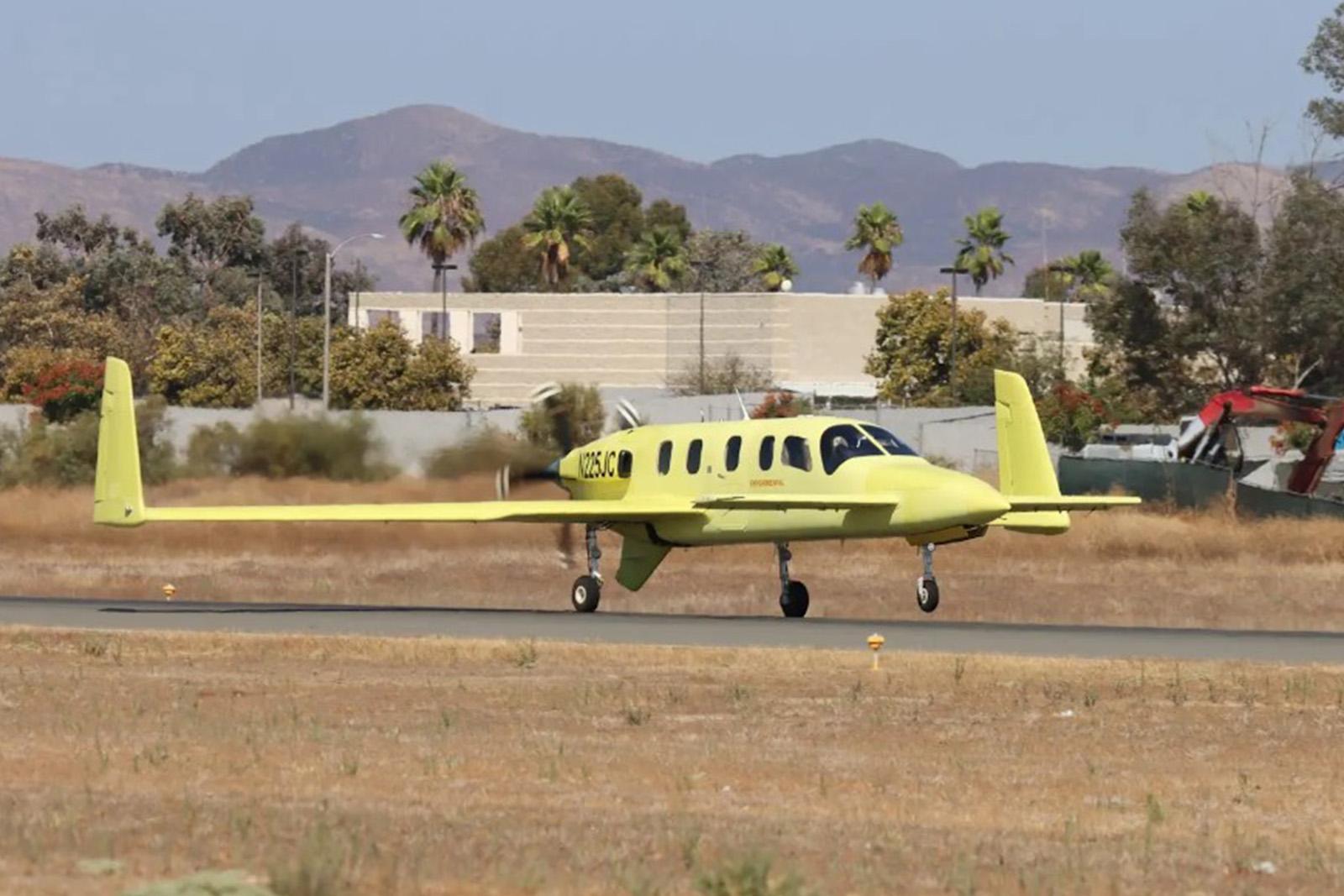
COLORADO SPRINGS—California-based Jetcruzer International has begun test flights of the first remanufactured canard-configured Jetcruzer 500 turboprop as part of wider plans to develop a zero-emission hydrogen-electric advanced air mobility derivative.
Powered by an aft-mounted Pratt & Whitney Canada PT6-66B, the aircraft made its first flight from French Valley Airport, California, on Sept. 18. Flown by Mark Elwess, the test pilot from the original Jetcruzer development program, “the first flight was a great success,” says Jetcruzer Chief Operating Officer Simon Roads.
The aircraft, which was first conceived as a low-cost transport by Advanced Aerodynamics and Structures, Inc. (AASI) in the 1980s, will be used as a testbed for an electric-powered derivative dubbed the Jetcruzer 1250E. Shown in model form at last year’s NBAA, the 10-seat variant is outlined with twin, tail-mounted pusher props powered by hydrogen-electric fuel-cells.
The company, which acquired the intellectual property and assets from AASI, also plans to sell new-build versions of the baseline turboprop-powered Jetcruzer 500.
Powered by a Rolls-Royce 250 single turboprop in its prototype form, and a Pratt & Whitney Canada (P&WC) PT6 in the stretched Jetcruzer 500 configuration first shown at NBAA in Las Vegas in 1998, the design was noteworthy for being the first aircraft to have achieved a spin-resistance certification from the FAA.
Although the Jetcruzer never entered production, the assets were acquired in 2016 by Victor Tao, president of Ontario, California-based Farrar Aerospace. Tao is now also vice president of engineering for Jetcruzer International.
The assets included four fuselages and two sets of wings. “So we're going to electrify one of them, and we'll get an electric motor into a fuselage this year. We’ll use it as a test stand and also to begin integration of the whole propulsion system,” Roads says.
The choice of motor supplier has yet to be decided, with the finalists widely thought to be electric propulsion specialist MagniX with its Magni650 electric propulsion unit and hydrogen-electric startup ZeroAvia’s 600-750-kW ZA600 powertrain. Entry into service of the initial electric-powered version is targeted for 2027.
